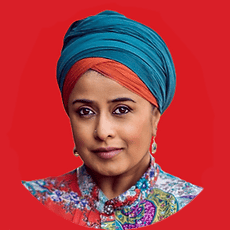This blog is part of our Expert Commentary series, bringing you insights into some of the unspoken challenges women face in the workplace, from experts with lived experience. The series explores a range of topics and perspectives to highlight the ways inclusive and compassionate leadership practices can benefit everyone.
‘You can’t be what you can’t see’.
This saying is significant in the diversity sector. It reminds us to appreciate the value of role models to young people, especially young girls, who look up to women they wish to emulate. While this is great for some, the reality is that most leadership roles are still occupied by people of Anglo Celtic descent, with little space given to people from different cultural backgrounds.
If we stop to think about the ‘glass ceiling’ phenomenon which has and continues to plague the assent of women into leadership positions they have earned, imagine the scale of obstacles for women with coloured skin, head coverings, foreign names, and accents; a veritable reinforced steel ceiling is the sad reality.
We know the hollow argument historically brought forward by naysayers in referencing women’s appointments, that ‘quotas’ should be discarded because ‘merit matters most’ – has been successfully debunked as women have shown repeatedly they are amply able to turn up, excel and get the job done – cue Gillian Triggs, Julia Gillard, Angela Merkel, Jacinda Ardern and others.By the same token, inclusion, and promotion of diverse women of colour (WOC) becomes an area of previously unchartered conversation that warrants attention. In a 2021 report, one in three WOC felt their workplaces were not culturally safe while 60 per cent reported experiencing racism at work.
Experience shows me that WOC lack neither the talent or capacity to succeed – merely the opportunity. Australian women leaders with influence are in a position to recognise and tap into this, and they should – because the ripple effect in elevating communities benefits us all. Ways to show allyship with WOC is to practice the art of cultural intelligence. This can be achieved in multiple ways, including:
- diversifying the way we market, recruit, and retain employees;
- interrogating the ethnicity pay gap that can drive real progress and action;
- delivering more progress through education and mentoring; and
- empowering WOC networks to play a key part enabling change.
By limiting the inclusion of all women in the workplace, we short-change ourselves because we inhibit the full potential of our colleagues. There is more than a fiscal benefit in hiring a diverse workforce – there is a moral imperative, too.
Not only does research prove the more varied a cohort of workers, the more enriched solutions can be, it stands to reason that when our workplaces resemble the communities and society we live in, we can and do deliver a product more attuned to our clients.
In Australia, where one in three of us is either born overseas or has a parent born overseas, (in some states almost one in two) we are faced with a reality that diversity is very much ingrained in the DNA of Australia; this is who we are. By extension, if women comprise 50 per cent of the nation’s population, we can and should be doing better with metrics in representation. Does your workforce resemble Australia’s cultural demographic today? If not, why?
When we hear about the concept of being an ally we rightfully assume it embodies the notion that a person shows solidarity for another, without expectation or gain, holding space for the otherwise sidelined minority. First Nations spokesperson Carly Stanley has posited we progress this idea from ally to accomplice, as the latter infers a more conscious role in the facilitating of opportunities for WOC. This has an affirming tone to it. In the same way we know that it is not enough to not be racist, but to be actively anti-racist, so too should our support be progressed actively, and not passively.
Actioning these ideas by making space for those outside the mainstream within your workspaces, will be a challenge. More often than not, that challenge will emanate from the comfort of privilege you yourself may have held without question – or even awareness – for the longest time.
Acknowledging the lack of diversity in your workplace is an uncomfortable reckoning for many and it is certainly easier to turn a (colour) blind eye to it and hope the injustices dissipate.
But they will not. I need to tell you that it is okay to feel uncomfortable and that to sit in your discomfort is a small price to pay in the evolution of social change that a shift in culture necessitates.
Discomfort soon becomes comfort as it leads to growth, which leads to success. Trust in the collective good of the diversity of the sisterhood and live the mantra that if your table is full, extend it. Else I can assure you, these WOC will make their own table and it will be impressive.
By Tasneem Chopra OAM. A cross-cultural consultant, Tasneem Chopra OAM addresses issues of diversity, equity and inclusion across organisational leadership, including intersectionality, within government, corporate, arts and community sectors.


